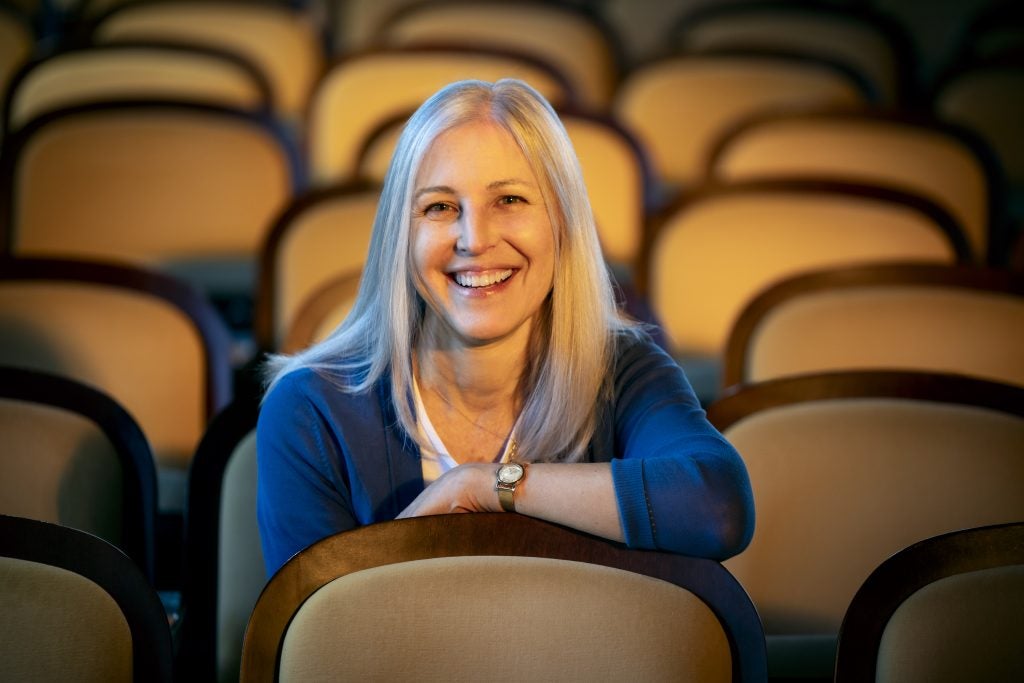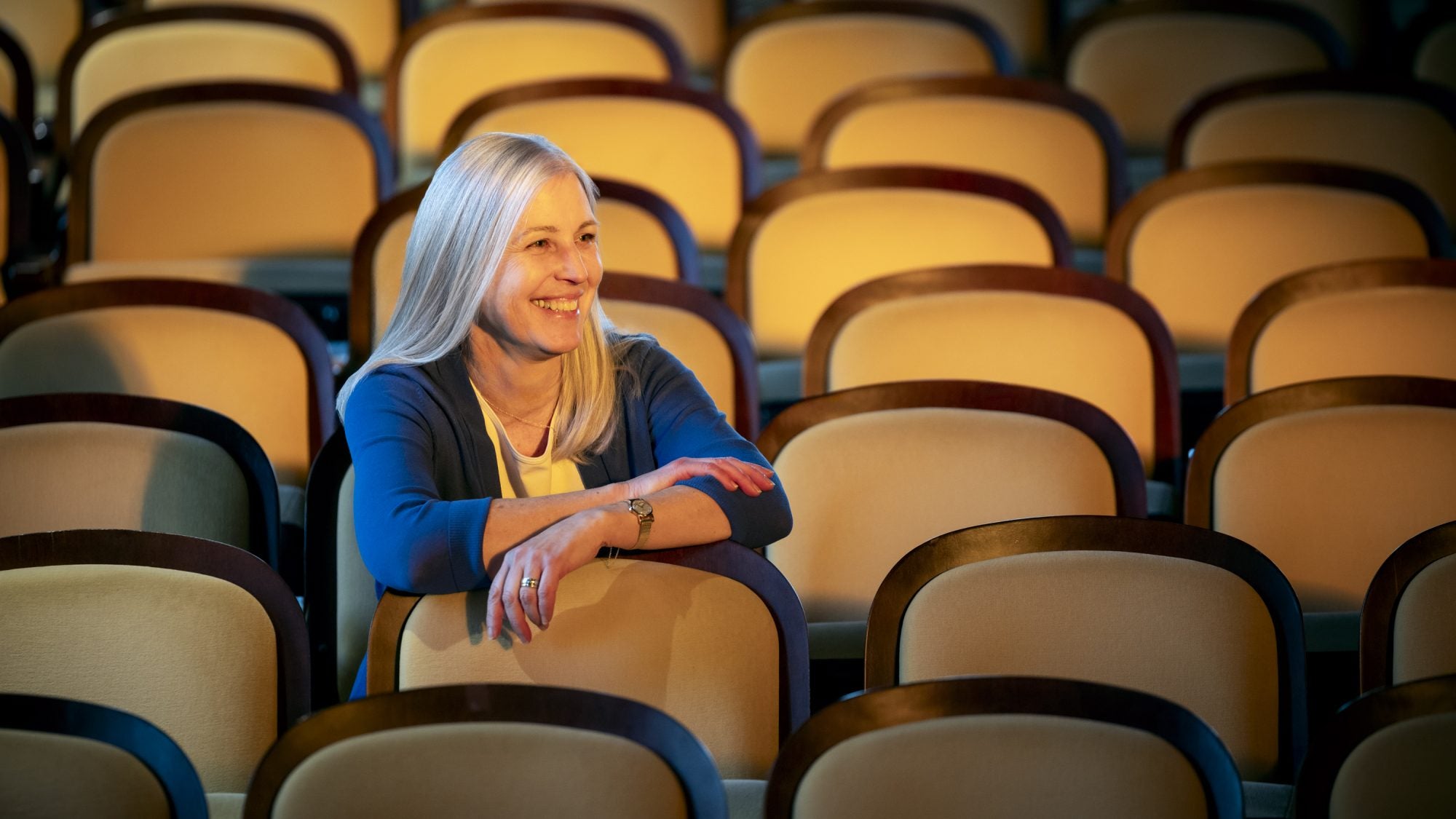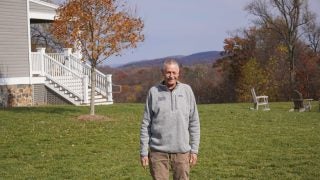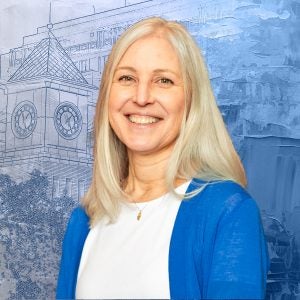
This story is part of Georgetown Faces, a storytelling series that celebrates the beloved figures, unsung heroes and dedicated Hoyas who make our campus special.
Vicki Girard (L’87) keeps a block of sticky notes on her desk that a student gave her.
They read, “Plans for World Domination,” with space to write below. The phrase has become her catchphrase for the Health Justice Alliance, a cross-campus partnership that trains law, medical and nursing students on how to use law as a tool to reduce health disparities for marginalized communities.
Girard co-founded the Health Justice Alliance in 2016, a collaboration between the medical and law centers. She had discovered the medical-legal partnership model years earlier, which integrates lawyers into healthcare teams to address legal issues that may negatively affect a patient’s health — a client with asthma whose landlord won’t fix their mold-filled home, for example, or a pregnant woman who needs a work accommodation.
Girard wanted to train the next generation of lawyers and health professionals how to work together to help patients who face challenges like food insecurity, poor housing conditions, lack of insurance, or educational or employment problems that require both legal advocacy and medical care to overcome.
“We want lawyers in every healthcare, hospital, clinic, facility,” the law professor said. “When medical students graduate, we want them to know how and when a lawyer should be a part of the health care team. That’s the vision.”
Today, Health Justice Alliance faculty, students, healthcare champions and staff provide no-cost legal services to cancer patients and pregnant and postpartum patients at MedStar Washington Hospital Center to address unmet legal needs that interfere with their health or well-being. Students also serve DC families and children’s legal needs as part of the Health Justice Alliance Clinic, which partners with the Division of Community Pediatrics at Medstar Health.
Girard herself is a former law student who graduated from Georgetown Law in 1987. After working on U.S. Food and Drug Administration (FDA) regulation and policy issues in a private practice, she returned to Georgetown to teach legal practice.
This year, Girard is celebrating 20 years at Georgetown. The university has become a special place for her family too. Both of her children are alumni, and her husband has volunteered in the Library’s Maker’s Hub. After 20 years, Girard still finds she’s excited by the work.
“There is not a day that goes by when I come out of the [parking] garage and I see the Capitol in front of me that I don’t feel a little bit awestruck that I get to do the work I do in Washington, DC,” she said. “It’s an amazing opportunity.”
Learn more about Girard’s path to Georgetown as a student and a professor, how she pioneered a medical-legal partnership, and her love of ice hockey.
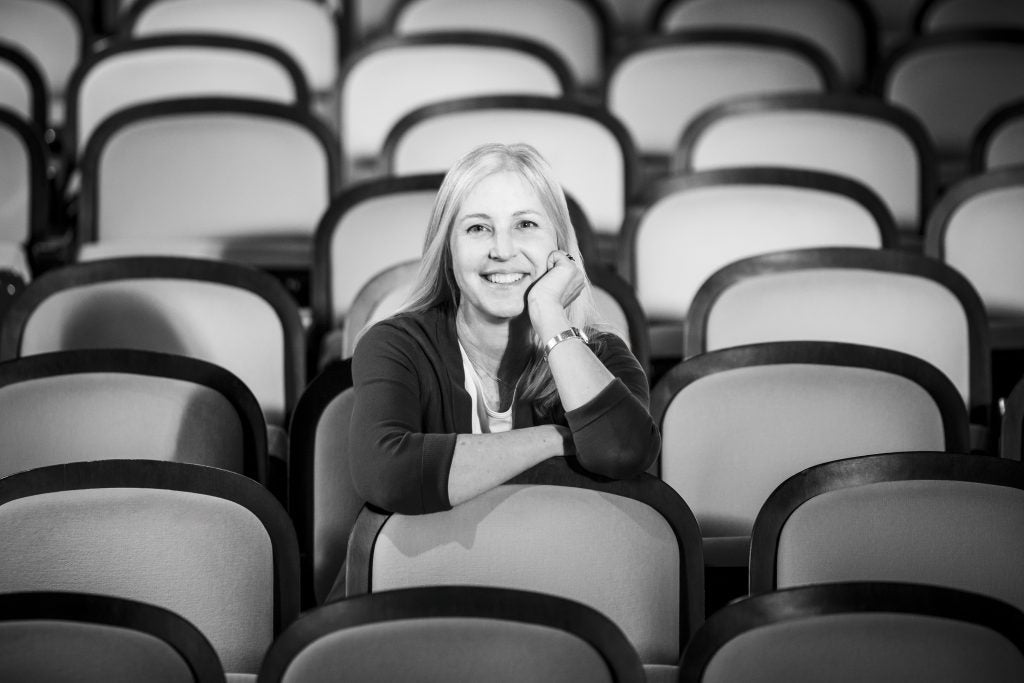
I decided to be a lawyer when: I was in college in the early 80s, and I was a political science major. I didn’t really know what else to do. Everyone was like, “Go to law school.”
I am a first-generation American on my dad’s side. My dad was born in Scotland, and my mother’s mother came over on the boat from Italy. Nobody had been to college or had done anything like that. Everything I ever heard was, “Education’s the most important thing. Education’s how you get ahead.” My grandmother used to say, “Education is the one thing nobody can ever take away from you.” So the idea of going to professional school was not a hard sell.
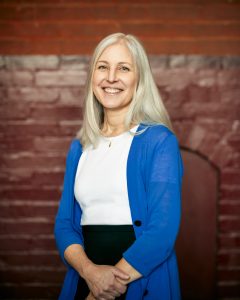
How I found my way to Georgetown and K St: I came to Georgetown because the idea of being in Washington, DC, seemed really exciting. Because of my family background, it was like, if you’re going to go to law school, you should work in a big law firm and make lots of money. That’s the dream. I never even thought about public interest or government, which probably would have been a better fit for me.
I went to a small tax boutique in DC when I graduated. Then I switched to a different law firm, and I met an amazing lawyer who had just worked with the FDA and was starting a practice. I became his primary associate, and that’s when I found out about food and drug law as an administrative practice. It was the health and medical stuff I was always interested in.
What got me interested in health care: Life is hard enough without having medical problems or worries about families that have medical problems. My mom was diagnosed with brain cancer when I was in college, and she was able to get great care up in New York and lived another 16 years. We didn’t have any [health] professionals in the family, so we navigated that whole system, but we were well-equipped to do so because we had insurance and could manage all the critical things adjacent to her care. I often thought, what if you don’t have those kinds of resources?
In my early forties, I had breast cancer and was also fortunate to receive excellent care. So I’ve just had lots of wonderful doctors and nurses throughout my life, and I see my work as helping them do their work, do it well and feel supported.
Why I created the Health Justice Alliance at Georgetown: I thought the idea of training students as they’re developing their professional identities would accelerate the medical-legal partnership movement because people would leave law school or med school already knowing about the model and how to work together. In addition to providing a path to advance health equity, I also saw the model as a way to address professional burnout. I thought this might feel like an empowering method for somebody who wants to go upstream and help people. How awesome [would it be] if you could prevent somebody from getting evicted instead of defending them against eviction? And how much better for their overall health and well-being?
The other thing that the movement was missing at the time was the research and evaluation to demonstrate its impact on long-term health consequences. I saw Georgetown as a place where we could contribute to the education and research while also serving our local community.
